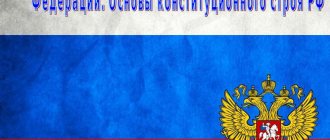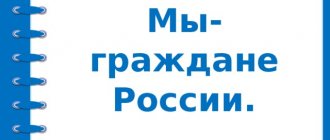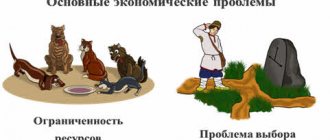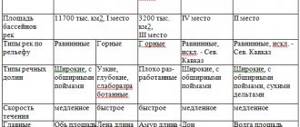Topic.4 Constitution of the Russian Federation. Fundamentals of the constitutional system of the Russian Federation
Constitution - (from the Latin constitutio - establishment, structure) is a single normative legal act with special legal properties, through which the people establish the basic principles of the structure of society and the state, and consolidate the legal status of a person and a citizen.
The Constitution, as the fundamental law of the state and society, has a number of differences from other legal acts.
Differences between the constitution and other legal acts
- Has a constituent, fundamental character. Regulates a wide range of social relations, the most important of which affect the fundamental interests of all members of society, all citizens. Secures the foundations of the socio-economic system of the state, its state-territorial structure, fundamental rights, freedoms and responsibilities of man and citizen, the organization and system of state power and administration, establishes law and order and legality. Therefore, constitutional norms are fundamental for the activities of government bodies, political parties, public organizations, officials and citizens. The norms of the constitution are primary in relation to all other legal norms.
- Has the highest legal force. The Constitution applies to the entire territory of the state. All laws and other acts of state bodies are issued on the basis and in accordance with the constitution. Strict and precise adherence to it is the highest standard of behavior for all citizens and all public associations.
- Characterized by stability. This is determined by the fact that the constitution establishes the foundations of the social and state system, and is designed for a long period of validity, as well as by the special procedure for its adoption and amendment.
— Contains norms that have direct effect. Constitutional norms operate without approval by any government bodies or officials.
| Types of constitutions | |
| written | unwritten |
| exists in the form of a single document (Constitutions of Russia, USA, France) | exists in the form of a large number of parliamentary laws, judicial precedents and customs (the Constitutions of Great Britain, Israel, New Zealand) |
| real | fictitious |
| adequately reflects the real constitutional structure | does not correspond to actual conditions, is declarative |
| popular-sovereign (contractual) (US Constitution of 1787, Russian Constitution of 1918) | octroied (French octroyer - grant, bestow), i.e. granted to his people by the monarch or president (Japanese Constitution of 1889) |
The role of the constitution in society is realized in its functions.
Functions of the Constitution
| Function name | Her essence |
| Political | Determines the structure of state power, consolidates political diversity |
| Legal | It acts as the core of the legal system, establishes fundamental legal provisions that are the starting points and determining ones for various branches of law. It pulls together the current legislation into a single integral system, giving it a consistent character. Ensures the ordering and proper legal regulation of public relations through a system of interconnected and internally subordinate regulations of the state |
| Humanistic | Embodies universal human values, consolidates the rights and freedoms characteristic of a civilized society, declares generally recognized principles and norms of international law to be an integral part of the legal system of the state |
| Founding | Establishes a certain order in the state, creates a system of institutions and authorities |
| Worldview | Contributes to the formation of the legal consciousness of the population - a body of knowledge about the law, views on the law, attitudes towards the law and assessments of the law |
Constitutions in states can be adopted for various reasons:
| Change of political regime in the state | Fundamental changes in the socio-economic and political life of the state | Formation of a new state |
=> Adoption of a new constitution
The Constitution of the Russian Federation is the basic Law of Russia, establishing the foundations of the constitutional system, the organization of state power and the relationship between citizens, society and the state.
Stages of constitutional development of Russia
| Stages | Year of adoption | Basic Law of the Russian State |
| I | 1906 | Basic laws of the Russian Empire (in fact, the first Russian constitution) |
| II | 1918 | The first constitution of the Russian Soviet Federative Socialist Republic (RSFSR) |
| 1925 | Constitution of the RSFSR | |
| 1937 | Constitution of the RSFSR | |
| 1978 | Constitution of the RSFSR | |
| 1989—1993 | Additions and changes made to the Constitution of the RSFSR of 1978 | |
| III | 1993 | Constitution of the Russian Federation (RF) |
The question of a new Constitution of the Russian Federation was raised at the First Congress of People's Deputies of Russia in 1990: a Constitutional Commission was formed to develop a draft of a new Basic Law. Such a project was prepared and considered by the Supreme Council of the Russian Federation and the Congress of People's Deputies of the Russian Federation, but it was ideological in nature.
In the spring of 1993, on the initiative of the President of the Russian Federation, a new draft Constitution was developed, to complete the preparation of which a Constitutional Conference was convened in the summer of 1993. In the fall of 1993, the Constitutional Conference continued work on the draft of the new Basic Law of the Russian Federation, which at the end of the year was submitted to a popular vote, held on December 12, 1993. According to the Regulations on the popular vote on the draft Constitution of the Russian Federation, in order to adopt a new Basic Law of Russia it was required that more than 50% of voters who participated in the voting voted for its adoption (provided that more than half of all voters participated in the voting).
The new Constitution of the Russian Federation was adopted on December 12, 1993 by popular vote and came into force from the moment its results were published - December 25, 1993. With its adoption, the Soviet period of development of Russian statehood ended.
The Constitution of the Russian Federation occupies a central place in the legal system of society.
Features of the Constitution of the Russian Federation
| Features that determine the central place of the Constitution of the Russian Federation in the legal system | Their confirmation |
| Accepted by the people (or on their behalf) | On December 12, 1993, as a result of a popular vote, the draft of the new Constitution of the Russian Federation was approved |
| Has a constituent character | The Constitution of the Russian Federation embodies the constituent power of the people, who are the bearer of sovereignty and the only source of power. The meaning of constituent power: the right to approve the foundations of social and state structure |
| Has the highest legal authority | This is explicitly stated in Art. 15 of the Constitution of the Russian Federation. In addition, it confirms the fact that the Constitution has direct effect and is applied throughout the territory of Russia. Laws and other legal acts adopted in the Russian Federation must not contradict the Basic Law |
| Is all-encompassing | The Constitution of the Russian Federation applies to all spheres of social life (economic, social, political, spiritual), within the framework of which it regulates the basic foundations of social relations |
| Is the basis for all other sources of law | The principles and provisions of the Constitution of the Russian Federation play a guiding role for the entire legal system and legislative system. It is the Constitution that regulates the process of lawmaking itself, that is, it establishes what basic acts are adopted by various bodies, their names, legal force, order and procedure for the adoption of laws. The Constitution of the Russian Federation itself names many federal constitutional laws and federal laws that must be adopted in accordance with it |
| Features a special order of protection | Art. 80 (Part 2) of the Constitution of the Russian Federation establishes that the President of Russia is its guarantor. In his oath, he undertakes to respect and defend the Constitution of the Russian Federation (Part 1, Article 82). The President has the right to suspend the actions of executive authorities of the constituent entities of the Federation in case of contradiction with their federal Constitution. The President, the Federation Council and the State Duma may initiate a procedure in the Constitutional Court of Russia for resolving disputes about the compliance of the normative acts specified in Art. with the Constitution. 125 of the Basic Law of the Russian Federation. The Constitutional Court of the Russian Federation is a body whose special task is the legal protection of the Constitution |
| Characterizes a special, complicated procedure for review and amendment | It follows from the text of the Constitution of the Russian Federation that it may be subject to revision, and certain amendments may also be made to it. Only the provisions of the 1st, 2nd and 9th chapters of the Russian Constitution are subject to revision, but they cannot be revised by the Federal Assembly of the Russian Federation. The introduction of amendments is aimed at changing Ch. 3-8 of the Constitution of the Russian Federation, which is within the competence of the Russian parliament. Subjects of the right to submit proposals for amendments and revisions to the provisions of the Constitution of the Russian Federation: the President of the Russian Federation, the Federation Council, the State Duma, the Government of the Russian Federation, legislative (representative) bodies of the constituent entities of the Russian Federation, a group of at least 1/5 members of the Federation Council or deputies of the State Duma. If the proposal to revise the provisions of Chapters 1, 2 and 9 of the Constitution is supported by 3/5 votes of the total number of members of the Federation Council and deputies of the State Duma, then a Constitutional Assembly is convened. It either confirms the immutability of the Constitution, or develops a new draft of it, which is adopted by the Constitutional Assembly with 2/3 votes or submitted to a popular vote. In the latter case, the Constitution is considered adopted if more than half of the voters who took part in the voting vote for it, provided that more than half of the voters took part in it. A somewhat simplified procedure for amending the Constitution relates to Chapters 3-8, amendments to which are adopted in the manner prescribed for the adoption of a federal constitutional law. However, these amendments come into force only after approval by the legislative authorities of at least 2/3 of the constituent entities of the Russian Federation. A proposal for an amendment to the Constitution must contain the text of a new article (part or paragraph of an article) of the Constitution of the Russian Federation, or the text of a new wording of the article, or a provision on the exclusion of the article from the Constitution of the Russian Federation. This proposal is submitted to the State Duma. The State Duma considers a draft law on an amendment to the Constitution in three readings. At least 2/3 of the total number of deputies of the State Duma and 3/4 of the total number of members of the Federation Council must vote for its adoption. After this, the law is published for general information and sent by the Chairman of the Federation Council to the legislative (representative) bodies of the constituent entities of the Federation for consideration. They are obliged to consider the law on an amendment to the Constitution of the Russian Federation within one year from the date of its adoption. After the legislative (representative) bodies of at least 2/3 of the constituent entities of the Russian Federation approve this law, it is sent to the President of Russia for signing and official publication |
Structure of the Constitution of the Russian Federation
In its structure, the Constitution of the Russian Federation consists of a preamble (introductory part) and two sections:
Preamble
It is proclaimed that the people of Russia accept this Constitution; democratic and humanistic values are consolidated; Russia's place in the modern world is determined.
First section
| Chapter no. | Chapter title | Constitutional articles | Subject of regulation |
| 1 | Fundamentals of the constitutional system | 1—16 | The essence of the state; legal status of a person and a citizen; principles of social and economic relations; foundations of the political system of society; relationship between state and religion |
| 2 | Rights and freedoms of man and citizen | 17—64 | Principles of the legal status of man and citizen; principles of Russian citizenship; system of rights and freedoms of man and citizen; guarantees of rights and freedoms; basic responsibilities of a person and a citizen |
| 3 | Federal structure | 65—79 | Constitutional status of the Russian Federation and its subjects; relations between the federal government and the subjects of the Federation |
| 4 | President of Russian Federation | 80—93 | The status of the President as head of state; procedure for taking office and powers; procedure for removing the President from office |
| 5 | Federal Assembly | 94—109 | Fundamentals of the organization and activities of the Federal Assembly, its status; formation procedure and competence; norms of the legislative process |
| 6 | Government of the Russian Federation | 110—117 | The procedure for forming the Government, its structure, level of competence; procedure for resignation and expression of no confidence in the Government |
| 7 | Judicial branch | 118—129 | Judicial system of Russia. Status of judges, principles of legal proceedings. The procedure for the formation and competence of the Constitutional, Supreme, Supreme Arbitration Courts of the Russian Federation; Prosecutor's Office of the Russian Federation |
| 8 | Local government | 130—133 | System and functions of local government; local government guarantees |
| 9 | Constitutional amendments and revision of the Constitution | 134—137 | The procedure for amending and supplementing the current Constitution; its revision |
Second section
Final and transitional provisions: on the entry into force of the Constitution of the Russian Federation and, accordingly, termination of the previous Constitution; on the relationship between the Constitution and the Federal Treaty; on the procedure for applying laws and other normative legal acts that were in force before the entry into force of this Constitution; on the grounds on which previously formed bodies continue to operate.
| Main objectives of the Constitution of the Russian Federation | |
| Transformation of Russia into a democratic rule of law state | Recognition and bringing the institution of human and civil rights and freedoms into line with international standards |
Fundamentals of the constitutional system of Russia.
The constitutional system is the structure of society and the state, enshrined in the norms of constitutional law.
The features of the constitutional system are:
- the rule of law;
- broad human rights and freedoms, their guarantee;
- participation of the people in the exercise of state power and broad popular representation;
- separation of powers.
The protection of the constitutional order is ensured by:
- a special procedure for proposing and introducing amendments to Chapter 1 of the Constitution - Fundamentals of the Constitutional System;
- the inevitability of punishment of persons carrying out actions aimed at overthrowing the constitutional order.
Universal human values and goals proclaimed in the preamble of the Constitution of the Russian Federation:
- democracy : human rights and freedoms, equality and self-determination of peoples, the democratic basis of Russian statehood;
- moral : belief in goodness and justice, honoring the memory of ancestors;
- Russian statehood : preservation of historically established state unity, revival of sovereign statehood, assertion of its inviolability;
- patriotism and internationalism : love and respect for the Fatherland, responsibility for one’s Motherland before current and future generations, awareness of the common destiny of the peoples of multinational Russia, its involvement in the world community.
The principles of the constitutional system included in the Constitution:
- a person, his rights and freedoms are the highest value (Article 2), which obliges the state to recognize, respect and protect the rights and freedoms of man and citizen;
- the sovereignty of its multinational people (Article 3), which means the supremacy of people’s power, the right of the people to be the bearer of sovereignty and the only source of power in the Russian Federation;
- state sovereignty of the Russian Federation (Article 4), meaning that state power in the Russian Federation is united, supreme and independent;
- federalism (Article 5), ensuring the state integrity of Russia and the delimitation of jurisdiction and powers between the state authorities of the Russian Federation and the state authorities of the constituent entities of the Russian Federation;
- separation of powers into legislative, executive, judicial (Article 10), meaning that the legislative, executive, and judicial authorities “restrain” each other, preventing the concentration of power in the hands of one body;
- Russia is a social state (Article 7). This principle establishes the social responsibility of the state for meeting the needs of members of society and creating conditions that ensure a decent life and free development of people;
- establishment of a market economy. This is manifested in the recognition and protection of various forms of property, private, state, municipal and others (Articles 8,9);
- ideological and political diversity (Article 13). Their essence is that no ideology in Russia can be proclaimed as state or mandatory and recognition of a multi-party system;
- Russia is a Soviet state . This means that in Russia it is not allowed to establish any religion as a state or compulsory religion; religious associations are separated from the state and are equal before the law (Article 14).
Contents of the Constitution of the Russian Federation
The Basic Law contains norms affecting all aspects of society.
The issues regulated by the Constitution of the Russian Federation include:
- human and civil rights and freedoms;
- social and government structure;
- territorial structure;
- norms of the main branches of law: criminal, civil, administrative, family, tax and others.
The Constitution consists of a preamble (foreword), two sections and nine chapters.
Objectives of the Constitution of the Russian Federation
The adoption of the Constitution had several main objectives.
TOP 4 articles that are read along with this
- 1. Rule of law
- 2. State structure of Russia
- 3. Democracy
- 4. Fundamental rights of citizens of the Russian Federation
- proclaim and consolidate fundamental human rights (the right to life, honor and dignity, personal integrity, freedom of movement, speech, thought, etc.), as well as duties (to comply with laws, etc.)
- establish the order of state power (prevent power from being concentrated in one hand - the principle of separation of powers)
- establish justice (resolution of all conflict issues peacefully and on the basis of fairness during the trial).






